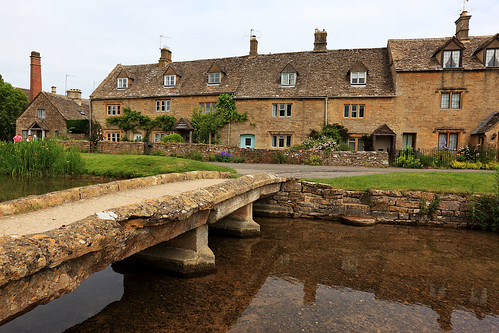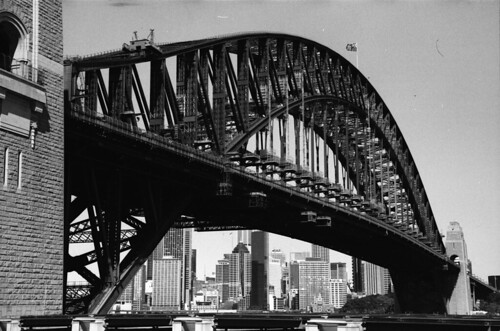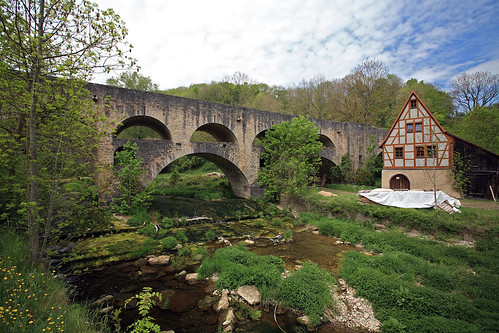

| Archive Blog Cast Forum RSS Books! Poll Results About Search Fan Art Podcast More Stuff Random |
|
Classic comic reruns every day
|
1 {photo of a bridge over a river}
1 Caption: Bridging the Gap
|
First (1) | Previous (3309) | Next (3311) || Latest Rerun (2895) |
Latest New (5380) First 5 | Previous 5 | Next 5 | Latest 5 Annotations theme: First | Previous | Next | Latest || First 5 | Previous 5 | Next 5 | Latest 5 This strip's permanent URL: http://www.irregularwebcomic.net/3310.html
Annotations off: turn on
Annotations on: turn off
|
 An arched stone bridge, Venice. |
Perhaps part of it is on a metaphorical level. Bridges connect things. When we speak of contacting people and making lasting relationships, we talk of building bridges. Bridges overcome obstacles. When we achieve something previously unattainable we have bridged a gap. Bridges represent positive interactions and long-term stability. If we antagonise people and destroy hard won trust, we are burning bridges.
Of course, the causal connection is likely the other way around. These metaphors were built on our understanding of the properties and qualities of bridges. They are solid, dependable structures which serve a practical purpose.
Bridges, particularly over water, combine this solidity with an elegance and lightness of construction that is deceiving to the eye. Perhaps this is part of the aesthetic appeal. Bridges are very rarely monstrous blocky constructions, odes to brutalist concrete architecture. They are more likely to appear diaphanous and airy, soaring and light. There is a very good reason for this.
 Stepped pedestrian bridge over a canal. |
Metal may not seem like a lightweight material, but it is very strong, and so has a high strength to weight ratio. Concrete is extremely strong in compression (when being squashed, as opposed to being stretched) and can be lightened using tricks like making hollow concrete sections. Wood is very light as far as construction materials go, so has a reasonable strength to weight ratio and still finds use in some bridges. Ropes and cables are strong in tension (being stretched, rather than squashed), and very light for their length.
The constraint that bridges need to be as light as possible while still achieving a minimum required strength means that there is no room for extraneous material. You can't clad a bridge in concrete or steel or glass purely for aesthetic purposes. The engineering has to be laid bare for the eye to see. Bridges (along with cranes and radio towers, which have similar requirements) are the most common structures in which the ingenuity of human engineering is directly visible.
There are several ways to support the weight of a bridge. The main problem with building a bridge is that you are trying to connect two points that you cannot walk or drive between. This usually means there is either an open gap like a gorge or valley between them, or such a gap filled with water. This means you can't easily support the middle of the bridge from underneath. You could do it by simply building a wall up from the bottom of the gorge until the top of the wall joins the two points you want connected. This sort of "bridge" is usually called a dam, and has other properties besides just providing a connection.
 Multi-span stone beam bridge. Lower Slaughter, England. |
The limit to this sort of bridge is how long the beam can be before it starts to bend. Beyond a certain length, depending how thick it is, wood will flex. Concrete is better, but the problem with bending is that it compresses the beam on the top while at the same time stretching the beam on the bottom. Concrete handles compression fine, but cracks under tension, so a concrete beam is in danger of cracking, and then breaking, under its own weight or when weight is put on it. Steel beams handle tension better, and steel is the primary material of choice for the longest beam bridges.
You can make your beam lighter by using your building material more cleverly. If you build a lattice-like framework, you can maintain strength and stiffness while reducing weight. This is a common engineering trick used to build large structures like radio towers as well as bridges. (A good example is the latticework of iron making up the Eiffel Tower.) This sort of latticework is called a truss, and bridges built this way are called truss bridges. In effect, however, they are just clever variants of beam bridges, with the building material being used more efficiently to make the beam lighter.
Even so, there is a limit to how long you can make a beam bridge before it will sag in the middle or simply break apart. One solution is to break your bridge into multiple spans. To do this, you build periodic towers up from the bottom of your gorge/river/whatever, and then lay multiple beams end to end across the tops of the towers. (In practice, you can lay a single long beam across the tops of the towers; it's essentially the same thing, although a single beam gains some further structural integrity over multiple beams.) In this way you break up the distance into several spans, each one of which is short enough to be safely covered by a beam bridge.
 Tower Bridge in London. The middle span is a pair of cantilevers which can swing open. |
Bridges over relatively still water such as lakes or river estuaries can also be built by floating beams directly on the water. This sort of bridge is called a pontoon bridge. Historically these were important because pontoons can be built quickly, allowing them to be used for troop movements during wars. Pontoons are vulnerable to water conditions though, so they are seldom used for modern, permanent bridges.
The main problem with a beam bridge span is supporting the weight at the middle of the beam. If your beam is stiff enough, you can help with this by extending the beam backwards and loading it with weight on the landward side. You can simulate this by laying a pencil flat on a desk, then extending its tip over the edge and preventing the pencil from falling off the desk by holding down the back end with your finger. You are using the lever principle to hold the free end up by providing a downwards force on the back end. The resulting overhang is known as a cantilever, and a bridge based on this principle is called a cantilever bridge. Cantilevers can also extend on both sides of the support point as well, like balancing the middle of a pencil on your finger, giving them extra reach if you can build supports for them within the gap you are bridging. Cantilevers on either side of the gap can meet in the middle, forming the connection. Cantilevers are a good choice for bridges that need to be physically opened, to let ships which would otherwise be blocked by the bridge pass for example. If engineered to do so, a cantilever can be swung, either up or sideways, to create a temporary gap in the bridge.
 Sydney Harbour Bridge, a steel arch bridge. |
The main issue is that the weight in the centre of a span is providing a force straight down, and there is nothing underneath it to support it directly. The weight needs to be borne by the ends of the beam, which are not in a direct vertical line. This offset in forces results in torque, or rotational force, which tends to cause bending of the beam. To reduce torque, and hence the risk of bending you can do certain structural tricks to realign the forces.
The trick par excellence is the arch. The shape of an arch causes the downward force in the centre of the span to be split into forces angled downwards and to the sides, where the supports are. The overall compressive force in each side of the bridge is increased (you don't get something for nothing), but it is redistributed so that the beam resists bending much better. Additional compression is not a problem for materials such as stone, brick, concrete, or suitably shaped steel beams. The result is that you can build an arched span from any of these materials that is much longer than any simple beam or cantilever span.
 Golden Gate Bridge, a suspension bridge. |
The idea of hanging leads to a couple of other ways to make a bridge. The classic bridge seen in cliffhanging archaeological adventures is the rope bridge. Rope is not a stiff material, so this is not a beam bridge at all - the rope cannot support its own weight without sagging. This is okay for humans, or maybe mules, but not ideal for vehicles. But rope can withstand a lot of tension. The weight in the middle of the rope is supported by forces which transmit along the rope, angling up as they move further towards the ends. In a way, this is like an arch, only upside down. (This parallel is not perfect. The best shape for a large arch is parabolic, but an unsupported rope dangles in a slightly different shape, known as a catenary.) the anchored ends of the rope need to support not only the weight of the rope, but also the sideways forces transmitted along the rope, which is why you need to tie them to a sturdy tree or something that can withstand being pulled sideways.
 Double height stone arch bridge. |
The resulting type of bridge is known as a suspension bridge. In most modern suspension bridges the rope is replaced by steel cables. And the points from which the rope/cable bridge dangles are the tops of two towers, specially built to serve this purpose. You usually need to build such towers to provide the anchor points above your desired pathway because the resulting pathway dangles below the suspending catenary of the "rope bridge".
The last main type of bridge is a variant of the simple beam bridge. As already mentioned, the problem with a beam bridge is holding up the weight in the middle to prevent it from bending. Rather than prop it up from underneath (thus forming a multi-span beam bridge), you can hold it up from above with cables. This is the same sort of principle as laying a pathway below an arch or suspension bridge with dangling vertical cables, but the cables can also be angled and anchored directly to the tops of towers built near the ends of the bridge. This gives the benefits of an arch or suspension bridge without needing to build the arch or the rope bridge to dangle cables from. The resulting type of bridge, with its distinctive angled cables, is called a cable-stayed bridge.
All of these types of bridges perform the basic function of connecting two places to allow traffic to move between them. Bridges also provide a highly visible testament to human ingenuity and engineering skill, which gives them a certain aesthetic quality. Bridges can be large and impressive, or small and intimate. Think of an arched brick bridge over a tiny canal in Venice, or a wooden bridge over a pond in a flower garden. It's easy to imagine these as places for a tryst or a wedding photo. Some types of human construction have a certain romance about them, and bridges definitely qualify on that front. Next time you cross a bridge, or see an unfamiliar bridge when travelling, take a second to stop and admire it.
|
LEGO® is a registered trademark of the LEGO Group of companies,
which does not sponsor, authorise, or endorse this site. This material is presented in accordance with the LEGO® Fair Play Guidelines. |